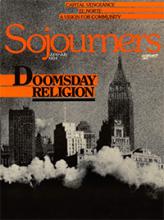Popular eschatology is a booming business. In recent decades, a host of television evangelists, including Jerry Falwell, Rex Humbard, Oral Roberts, Kenneth Copeland, and Herbert W. Armstrong, have popularized various theories about the second coming of Christ and the apocalyptic end of the present world.
Prophecy buffs transect the continent with slide shows, films, and wall charts enticing their audiences to join them in the guessing game. Books on end-time speculation are flooding Christian bookstores. And the number-one non-fiction best seller in the 1970s, aside from the Bible itself, was Hal Lindsey's The Late Great Planet Earth, which sold more than 15 million copies.
The prophecy promoters all begin with the same question: "What is the timetable of the last days?" They take highly symbolic material from Daniel to Revelation and give it literal, simplistic, and culturally biased interpretations in order to explain complex events and to predict how the world will end.
Since the church began, some people, out of either their struggle or their theology, have expected the imminent return of Christ. For example, when Napoleon and his army invaded Moscow in 1812, groups of Russian believers were convinced the apocalypse had come and Napoleon was the Antichrist.
However, the widespread evangelical preoccupation with the end times is of fairly recent origin. Evangelicals in the early and middle 1800s, inspired by the awakening that Charles Finney sparked, believed the Bible taught they were to work for the kingdom now. They were in the forefront of every major social reform movement in the United States before the Civil War, from the abolitionist and temperance movements to the struggles for women's rights and peace.
Read the Full Article

